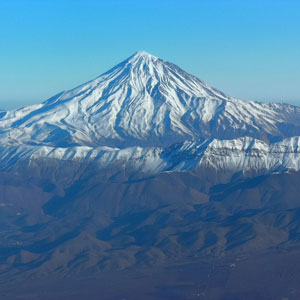 Signin with Google
Signin with Google Signin with Facebook
Signin with Facebook
 Culture,History
Culture,HistoryBlessing Qanat, the Underground Highways to the Water

What is it that we seek, even on the surface of the farthest planet in the solar system? The sound of it brings not only the birds but the entire existence to sing.
It’s called WATER!
The water has been taking the unrivalled seat of sanctity in ancient Persia. Anahita, the graceful goddess of Water was being worshipped by followers of the god Mithra in the Persian antique era. Zoroastrians believe after the fire the most sacred element is “Water” and Islam considers water the source of creation.
Long ago, when Iran was twice as vast as it is now, in the most glorious time of the Achaemenian dynasty, Darius the Great prayed to god:" Protect my country from lies, enemies, and drought.” But what did make the Persian civilization survive from drought in the domination of aridity?
Indigenous knowledge compatible with nature
Perhaps an especial method was employed, which comes with a name strongly tied with Iran. This founder of many civilizations is called “Qanat” by people in the country’s western regions and “Kariz” by the people living in eastern Iran. With more than 32,000 strings of Qanats, Iran is the cradle of Qanat Civilization!
Sustainable usage of water resources, Conservation of agricultural communities, improving the soil and quality of water are among exceptional advantages of the Persian Qanat. It is not only a technique of exploiting water but a culture of living derived from nature. Without “Qanat Civilization”, cities including Kashan, Yazd, Isfahan and Mashhad wouldn’t exist or at least didn’t stand a chance to civilize.

Qanat and its heritage
Qanat is a water exploitation method, perceiving the fact that water moves in search of the deepest spots, supplying groundwater via a gently sloping tunnel leads water without the help of fossil fuels or any electric power but by gravity flow from beneath to a ground surface, providing water all throughout the year irrespective of the annual rainfall.
In the Qanat system, the water from an underground water source is transported through an underground horizontal tunnel, called "Koshan" by gravity aid due to the gentle gradient of the tunnel. "Mother well", The farthest water infiltrating well is sunk into water source as the deepest well shaft of the qanat. “Kooreh” (A Water Manhole) accessed via a series of vertical wells, called “Mileh” or well shaft, dug in calculated regular distances from one another. Starting from a foothill of a mountain, “Mother Well” sends the water downhill and wishes her well on a journey of a few or more kilometres heading to a destination called “Mazhar”, where water exits from the tunnel to gift people with water to drink, farmlands to irrigate.
The knowledge of building Qanat has been unwritten for centuries where the "Qanat-kans" (Qanat engineers) transferred these methods to their sons and then one after the other like a priceless heritage.

Rites in honour of Qanat
People believed Qanat is a living creature and each Qanat had a gender of itself. One of the unprecedented rituals is the marriage of Qanat that was being held in different regions of Isfahan province. When Qanat ran out of the water, it was said qanat turned into a male and should be married to a nice widow woman of the town. There was a great Wedding ceremony that usually took several days long. The bride of Qanat was respected and also received a share from water and farm products. She had to wash her body in the water of Qanat at specific times and surprisingly after marriage qanat have been returned back to its glory again. This tradition has been applied since Anahita, the goddess of water was been worshipped in ancient Iran.

Qanat and the Modern Era
The ancientness of the Qanats doesn’t make them less effective and important. Although for the past 50 years Qanats have been less utilized, there are a few Qanats in Iran still serving their initial purpose of irrigation in cities including Arak, Birjand, Kashan, and Najaf-Abad. The 9 Persian Qanats are inscribed in the list of UNESCO world heritages to provide exceptional testimony to cultural traditions and civilizations in desert areas with an arid climate.

Mark the only two-storey Qanat in the world in Ardestan city of Isfahan province. The name of this masterpiece of intelligence and effort is "Moon", the 800-year city of wells. Water in each layer takes its own way and never mingles or penetrates to the other storey of this qanat. You may want to know how, but it seems to be more engaging to see it live, go for it.
By Sara Kheirdoust / TasteIran


